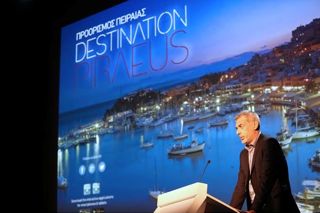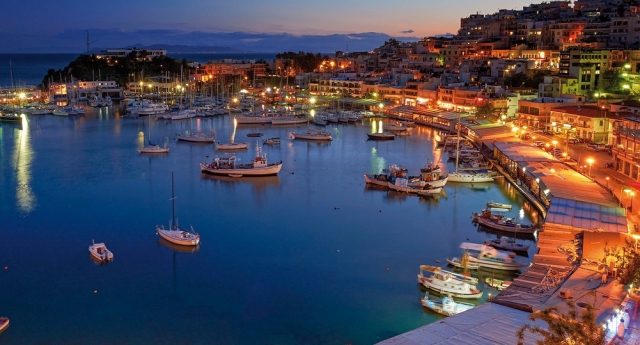Simona Peneva
One of the most fascinating cities in Greece in terms of history and beauty is Piraeus. It is a modern city that has managed to preserve its originality and history, attracting both tourists and Athens residents themselves. A source of unforgettable moments and special memories, the one and only and authentic are just some of the definitions of Piraeus.
Therefore, it deserves its own advertising campaign that will attract more visitors and support the local economic development. "Piraeus is the first thing tourists see when they disembark from cruise ships. We have to make them stay here for at least two or three hours. Therefore, they need to know which sites they can visit, even before arriving here," said Piraeus Mayor Yiannis Moralis.
 "Destination Piraeus" uses the latest electronic technologies and is a completely free service available to all those who wish to take advantage of it. The book that describes in detail, in Greek and English, the places that everyone should visit when in Piraeus is already being distributed, the applications for phones and tablets, through which you can choose a place to visit even without the Internet have been launched as well as the latest program "Zoom reality", which allows you to take a picture of where you are and automatically shows results of the most interesting and remarkable sites near you. The service is available on the website www.destinationpiraeus.com and is sponsored by owner of Olympiacos football club and public councillor in the municipality of Piraeus, Vangelis Marinakis, who has covered all costs of the advertising campaign and is now delivering it to the city of Piraeus. Here are some of the tourist attractions that you should not miss:
"Destination Piraeus" uses the latest electronic technologies and is a completely free service available to all those who wish to take advantage of it. The book that describes in detail, in Greek and English, the places that everyone should visit when in Piraeus is already being distributed, the applications for phones and tablets, through which you can choose a place to visit even without the Internet have been launched as well as the latest program "Zoom reality", which allows you to take a picture of where you are and automatically shows results of the most interesting and remarkable sites near you. The service is available on the website www.destinationpiraeus.com and is sponsored by owner of Olympiacos football club and public councillor in the municipality of Piraeus, Vangelis Marinakis, who has covered all costs of the advertising campaign and is now delivering it to the city of Piraeus. Here are some of the tourist attractions that you should not miss:
Piraeus Peninsula, which is located east of the central port. With its sea views, this is one of the most crowded and most popular areas, visitors’ favourite place to relax. The three bays of this peninsula are Skafaki, Baikoutsi and Aphrodite. If you walk along the coast, you will find restaurants, cafes and bars, and if you prefer to stroll at the end of the day, you will have the opportunity to admire the unique sunset.
Coast of Zea (Pasalimani), the name of which is due to the fact that during the Ottoman rule, the pashas, who lived in Athens, and their harems came down to the coast to swim. This is the second largest of the three ports in Piraeus. Here you will also find many cafes and restaurants with a fantastic panoramic view. One of the oldest cafes, Kivelia, which no longer exists, was where the legendary football club Olympiacos was founded as an association.
The walls and gates of ancient Piraeus. In 493 BC, Themistocles began building fortresses around Piraeus. The two main gates of the fortress walls are located at the entrance of the modern city, on 34 Syntagma Street. The long walls built to connect Athens with its seaport created a safe route between Piraeus and Athens during the Peloponnesian War. It is a very interesting place that has many stories to tell.

Mikrolimano, one of the most beautiful places in Piraeus. It has an oval shape and many names - Mikrolimano, Fanari, Tourkolimano, Koumoundourou port. Mikrolimano offers a great choice with regard to food and entertainment. The closed bay is surrounded by amphitheatrically built houses. Here you can enjoy cocktail bars and cafes as well as the very famous fish restaurants where you can try fresh fish dishes, seafood, ouzo and fine wines. We are not finished yet - here you can even find restaurants the history of which dates back to 1932.
Castella is located on the hill that rises northwest of Mikrolimano and north of Votsalakia beach and its architecture draws significant interest. While walking there, you can enjoy mansions of the 19th century and two-storey neo-classical and old estates. At the top of the hill you will find the church of Prophet Elias, and Veakeio theatre which was built on the basis of design patterns of ancient Greek theatres and which can accommodate 2,000 spectators.
The Lion of Piraeus that stands on Xaveriou coast is a true copy of an original statue, which was stolen; due to it, the Latins called Piraeus Porto Leone in the Middle Ages.